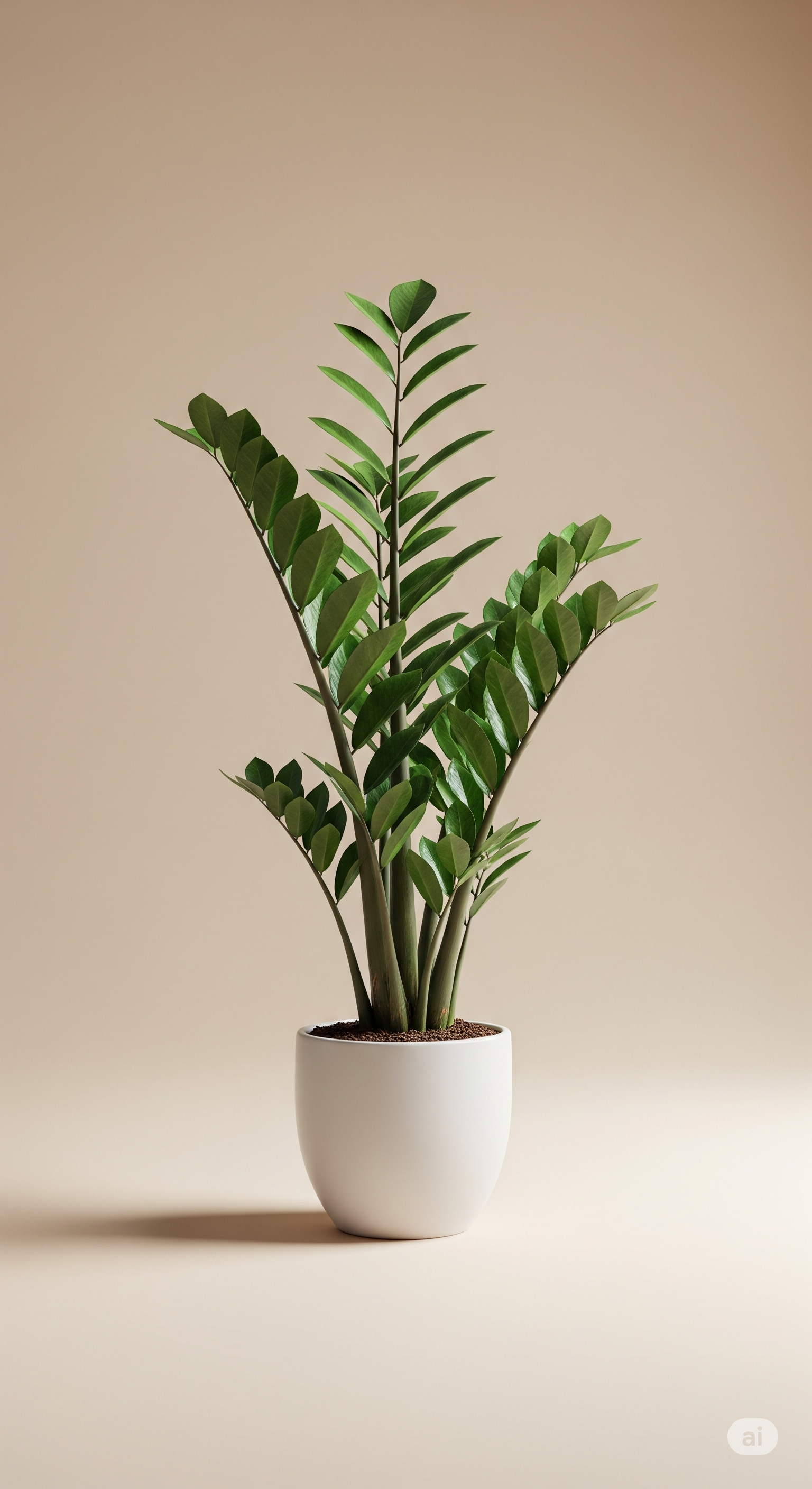ZZ Plant

Scientific name: Zamioculcas zamiifolia
☠️ Toxicity: Toxic to cats
☀️ Ideal light: Low to medium light; prefers bright indirect light
💧 Watering: Sparse — water only when the soil is completely dry
The ZZ Plant is one of the most beloved indoor plants for good reason — it’s elegant, sculptural, and nearly indestructible. With glossy dark-green leaves and upright stems, it adds a modern, refined touch to living rooms, offices, and shaded corners that other plants would struggle to survive in.
Unlike many tropical species, the ZZ Plant stores water in its underground rhizomes — round tuber-like structures that act as natural reservoirs. Thanks to this adaptation, it thrives even when watering is forgotten for weeks, making it a perfect match for busy plant lovers.
The only thing it won’t forgive is overwatering. Constantly wet soil leads to root rot and yellowing leaves. The golden rule: water only when the top layer of soil is bone dry, and ensure the pot has good drainage.
Essential care
- Light: Bright indirect light is ideal, though it tolerates shade.
- Water: Every 15–20 days or when the soil is fully dry; never leave standing water.
- Soil: Well-draining and airy (e.g., 1 part potting mix, 1 part coarse sand, 1 part perlite or fine bark).
- Environment: Prefers temperatures between 18–28 °C / 64–82 °F and protection from cold drafts.
- Fertilization: Once a month in spring and summer with a balanced diluted fertilizer (e.g., NPK 10-10-10).
Propagation
- Rhizome division: Separate mature rhizomes during repotting.
- Leaf cuttings: Root individual leaves in moist, well-draining soil. The process is slow but effective.
Cat safety
- Classification: Considered toxic to cats and dogs.
- Active substance: Calcium oxalate crystals, which can cause oral irritation, drooling, and mild digestive upset if chewed.
- Precaution: Keep out of reach of pets and use gloves when handling cut leaves or repotting.
Pests and how to handle them
- Scale insects: Remove manually with a cotton swab dipped in 70% alcohol or apply neem oil.
- Aphids: Wash off with a gentle stream of water and mild soap solution.
- Yellow leaves: Usually a sign of overwatering or poor drainage.
💡 Beyond its resilience, the ZZ Plant is known as the “Fortune Plant” or “Dollar Plant,” a symbol of prosperity, endurance, and positive energy in many cultures.
Frequently asked questions
- Can it live with air conditioning? Yes, as long as the airflow doesn’t blow directly on the leaves.
- Can I keep it in the bathroom? Yes, provided there’s some natural light.
- When should I repot? Every 2–3 years or when rhizomes begin to press against the pot.
Quick checklist
- ☀️ Bright indirect light
- 💧 Water sparingly
- 🪴 Well-draining soil
- 🌡️ Mild, stable temperature
- ☠️ Toxic to cats